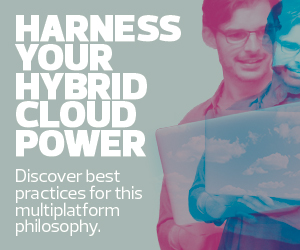Embrace a Holistic Hybrid Cloud Approach and Reduce Silos
Organizations may have a networking team focused on routers and switches, a security team that handles firewalls, and server teams working with data center technology. A hybrid cloud mindset requires breaking down silos between traditional on-premises data center staff, who tend to be focused on hardware, and the cloud experts.
“There are still a lot of silos within organizations because they’ve traditionally been organized around skill domains specific to a piece of hardware,” Gibes says. “I often call that hardware-centric.”
In addition, organizations must break down workflow silos among various parts of their business, from finance to line-of-business leaders. That involves bringing together application owners as well as IT, finance and security teams.
To eliminate these silos, companies can take a cloud center of excellence (CCoE) approach, in which representatives from across an organization become a kind of “board of directors” for a hybrid cloud deployment, overseeing strategy at a high level while leaving technical details to the IT department.
Click the banner to learn how your institution can benefit from a hybrid cloud environment.












